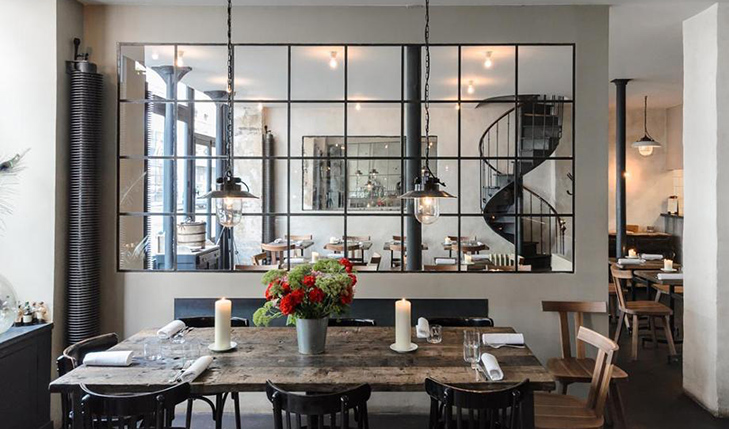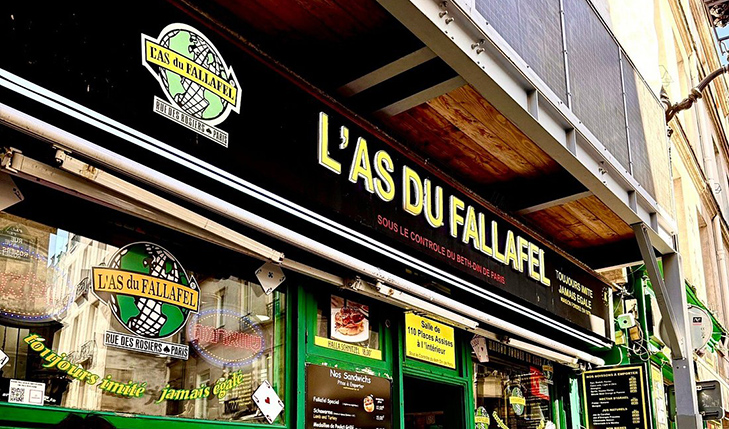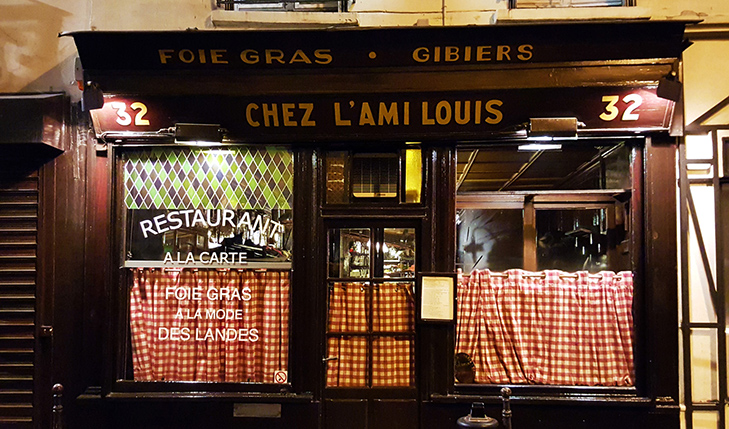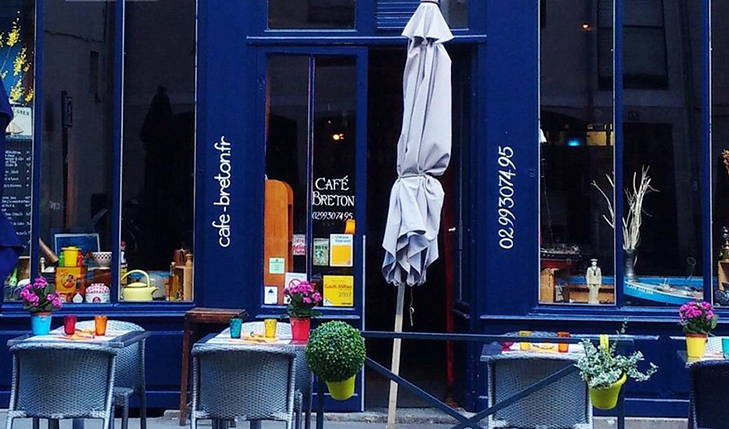Few things give me as much joy as discovering that perfect meal—where the food, atmosphere, and memory merge. Paris is a mecca for culinary excellence, from century old institutions to inventive modern bistronomie. Here are five restaurants I personally visited, each offering something unique: signature dishes, location, price range, my experience, plus practical tips so your reservation—and your palate—are well satisfied.
1. Chez L’Ami Louis (3rd arrondissement) – Rustic Bistro Royalty
Address: 32 Rue du Vertbois, 75003 Paris (Le Marais)
Signature dishes: Roast chicken with fries, thick‑sliced foie gras, leg of lamb
Price: Around €200+ per person for a simple three-course meal + wine
Reservations: Required weeks in advance; call or ask your hotel concierge
My visit & impressions:
One crisp March evening, I walked into Chez L’Ami Louis, a legendary Parisian institution founded in 1924 and now under LVMH’s hospitality wing. There are only fourteen tables in the wood‑panelled dining room, so the air feels heavy with history. I reserved two weeks ahead via my concierge.
I started with a thick slice of foie gras, melting, buttery, served over warm toast. The roast chicken followed—deep golden skin, juicy meat, paired with crisp fries in aubergine fat. Each bite felt decadent and honest. The service is old‑school: servers bring the gravy cart, carve at the table, and seem to move in a quiet ritual. It’s not elegant fine dining—it’s visceral, generous, born of confidence in simple technique.
Pros: historic charm, superb quality ingredients, unforgettable roast chicken
Cons: extremely high price, portion sizes huge (I couldn’t finish), atmosphere crowded and a touch theatrical
Tip: go early in the evening, request a window table (there’s one with a view onto rue Vertbois), and don’t fill up beforehand—it arrives heavy and fast.
2. La Tour d’Argent (5th arrondissement) – Legends, Duck & River Views
Address: 15 Quai de la Tournelle, 75005 Paris (Latin Quarter, overlooking Seine & Notre Dame)
Signature dish: Canard à la presse (pressed duck), legendary foie gras
Price: Lunch ~€150, dinner upwards of €360+ per person; wine extra
Reservations: Required; possible through restaurant website or hotel concierge
Personal experience:
I have long dreamed of dining at La Tour d’Argent, one of Paris’s oldest restaurants (founded 1582), famed for its pressed duck and a wine cellar said to hold over 450,000 bottles. I booked a late lunch reservation to enjoy light sun across the Seine and an unobstructed view of Notre Dame.
The pressed duck was dramatic: carved at a silver trolley, flanked by sauce made from the duck’s own jus—rich, savoury, precise. A postcard with my duck’s serial number came with the bill—that tradition stretches back over a million at La Tour d’Argent. I also had their truffle ravioli starter, which was delicate, aromatic, and rich in an understated way.
Service was impeccably refined—servers in white gloves, seamless with wine pairing suggestions, timing fluid. I left wanting to return—though the price puts it in once‑in‑a‑lifetime category for many.
Pros: historic prestige, iconic duck, unforgettable view and setting
Cons: steep price, formal rules (jackets expected), atmosphere a bit stiff for casual travelers
Tip: wear smart‑casual, ask for the Seine‑side table, avoid weekends if you want quieter dining. I booked six weeks ahead.
3. Septime (11th arrondissement) – Modern Minimalist Marvel
Address: 80 Rue de Charonne, 75011 Paris
Signature dish: Seasonal tasting menu (smoked eel, vegetable medley, herb desserts)
Price: Around €70 for the seven‑course menu; wine pairing extra (€35–50)
Reservations: Open three weeks in advance at midnight Paris time (highly competitive)
My experience:
Even as a seasoned traveler who dines in high‑end places, I love Septime for its elegant simplicity and culinary inventiveness. One evening I scored two seats for dinner by logging on exactly at midnight when reservations opened. The minimalist decor—wood tables, single flowers, natural light—set the tone.

Highlights included smoked eel over seasonal spring vegetables, followed by a lamb dish perfectly rare and sauced sparingly. Dessert was fresh—a herb‑infused ice cream with citrus and edible flowers. Even my vegetarian friend glowed over the grilled asparagus and fermented honey dessert. The wine pairing featured natural French wines that felt unexpected but harmonious. Friendly, low‑key service reinforced the sense this team focuses on food first.
Pros: innovative seasonal cuisine, excellent value for the level, relaxed but polished ambiance
Cons: booking is a challenge; no à la carte, so poor if you’re picky; small space
Tip: sign up for their email alert to know reservation window; dinner slots fill within minutes. Lunch is easier and a tiny bit cheaper.
4. Au Pied de Cochon (1st arrondissement) – Seafood & Brasserie Tradition
Address: 6 Rue Coquillière, 75001 Paris (near Les Halles)
Signature dish: Roasted lobster platter, oysters, mussels; onion soup classic
Price: €60–80 for seafood platter; lobster closer to €90–€120; open until 5 a.m.
Reservations: Recommended for dinner but possible walk‑in anytime
Personal tale:
One rainy night I strolled out of the Louvre around midnight craving hearty brasserie food. Au Pied de Cochon was a safe bet—open all night, brimming with life. I sat at a high counter near the kitchen, warmed by lamps and chatter.
The roasted lobster arrived with crispy fries and silky béarnaise—succulent and boldly seasoned. I also tried their classic onion soup: deep roast onions, sweet broth, gratinéed bread, thick cheese crust. The atmosphere thrummed—servers in black ties, clattering dishes, patrons ranging from locals at bar stools to sleep‐deprived travelers.
Pros: open very late, excellent seafood and traditional dishes, energetic Parisian vibe
Cons: can be noisy, rushed if busy, touristy but earned it
Tip: walk in if arriving after midnight; avoid peak hour 8–10 p.m. for smoother service.
5. L’As du Fallafel (Le Marais, 4th arrondissement) – Fast & Iconic Street Food
Address: 34 Rue des Rosiers, 75004 Paris
Signature item: Falafel sandwich with eggplant and hummus
Price: €5 at the window, €7 if dining inside
Reservations: None; walk‑in only, lines frequent
My street‑food memory:
During a midday wander in Le Marais, I joined the iconic queue snaking out of L’As du Fallafel, known across Europe for the best falafel sandwich ever served. After a brisk 15‑minute wait, I tucked into a warm pita loaded with crisp chickpea falafel, silky eggplant, smoky hummus, pickled cabbage, and spicy harissa. Each bite delivered texture, heat, and tang—it was simple but perfect street food.
Eating there standing on the sidewalk, watching locals and tourists grab lunch, I felt a sense of shared ritual. I went twice during that trip. On my second visit, the staff were calmer, joking with regulars—they remembered my spice level (medium‑hot).
Pros: unbelievably cheap, fast, fresh, perfect for lunch or snack
Cons: no seating (unless upstairs), queue can be long at lunch, small shop
Tip: go later in lunch hour (14:00) to avoid huge crowds; don’t skip the tahini drizzle.
Ordering, Reservations & Cook-in With Tips
As a travel advisor and foodie, I learned some ground rules on eating well in Paris:
- Reservations: For fine‑dining or historic restaurants (La Tour d’Argent, L’Ami Louis), book at least 2–4 weeks in advance; some like Septime open slots three weeks prior at midnight. For late‑night places like Au Pied de Cochon, walk‑in is fine.
- Dress code: Smart casual is fine at Septime and Au Pied de Cochon. At L’Ami Louis and La Tour d’Argent, jackets and polished style make sense—even if not mandatory.
- Budget guide: Expect €150–360 at La Tour d’Argent, €70–100 at Septime, €60–120 at Au Pied de Cochon, €200 at L’Ami Louis, and under €10 per person at L’As du Fallafel.
- Tipping: Service is included by law, but rounding up or leaving a few euros is appreciated for exceptional service.
- Timing: Lunch menus often offer better value; dinners at iconic places are theatrical and more costly. Street‑food like falafel is best mid‑day.
- Dietary notes: Septime accommodates vegetarian preferences beautifully. At La Tour d’Argent and L’Ami Louis, menus are meat‑heavy—ask ahead if you need substitutions.

Reflecting on Flavors, Memories & Food Culture
Each meal taught me something:
- At Chez L’Ami Louis, I learned that tradition and boldness still matter—roast chicken can become a ritual when served with pomp and precision.
- At La Tour d’Argent, the duck reinforced how cuisine and heritage fuse—every bite felt like Paris texting me its legacy.
- Septime reminded me that creativity and modesty can coexist—a fusion of sustainability, flavor, and elegance without pretense.
- At Au Pied de Cochon, I rediscovered brasserie dining as living theater—seafood arrives theatrically, the soup makes you slow down, the ambiance hums.
- L’As du Fallafel showed me how perfection can fit in a pita—it’s about balance, spice, and getting the details right each time.
I left Paris carrying tastes in my memory: the herb‑flower dessert from Septime, the postcard‑numbered duck bill, pigeon pie I regretted not ordering, fries cooked in duck fat, tahini‑dripping falafel. These meals anchored my trip—it isn’t just about museums or souvenirs; it’s the flavor stories I recount at home dinners.
Why These Five? A Blend of Food History, Innovation & Accessibility
- Historical landmarks: Chez L’Ami Louis and La Tour d’Argent carry Paris through centuries.
- Modern excellence: Septime shows where Paris is headed—sustainable, refined, bold.
- Local favorite: Au Pied de Cochon remains beloved by locals and night owls alike.
- Street‑food legend: L’As du Fallafel defines fast, authentic charm in Le Marais.
Together, they cover fine dining, casual Brasserie, innovative bistronomie, and iconic street food—a balanced route for any traveler who appreciates food.
Final Advice for Dining in Paris
- Plan ahead for reservations, especially for popular or high‑end restaurants.
- Ask your hotel concierge to assist—they can often secure tables or suggest off-hours times.
- Don’t skip street food and afternoon treats—some of the best breakfasts come from boulangeries, and some of the most memorable meals are ragged falafel pita on a twisting Marais alley.
- Walk after meals: Parisian digestion thrives on strolls. After Septime dinner walk to Canal Saint-Martin. After Au Pied de Cochon wander Les Halles.
- Carry cash and small euros—some old bistros still prefer cash, and tips or additional orders are smoother that way.
- Keep a flexible day for spontaneous discoveries—I once found a tiny Moroccan café with mint tea better than the falafel I’d planned for.
Dining through Paris is not just food—it’s culture, history, creativity, and community. As someone who’s advised thousands of travelers, I can say that these five restaurants offer an experience you’ll remember long after you return home. Pair duck genealogy with falafel spontaneity, modern sustainability with old‑world roast chicken, and let Paris feed more than your appetite: let it feed your memories.
Bon appétit and safe travels!




